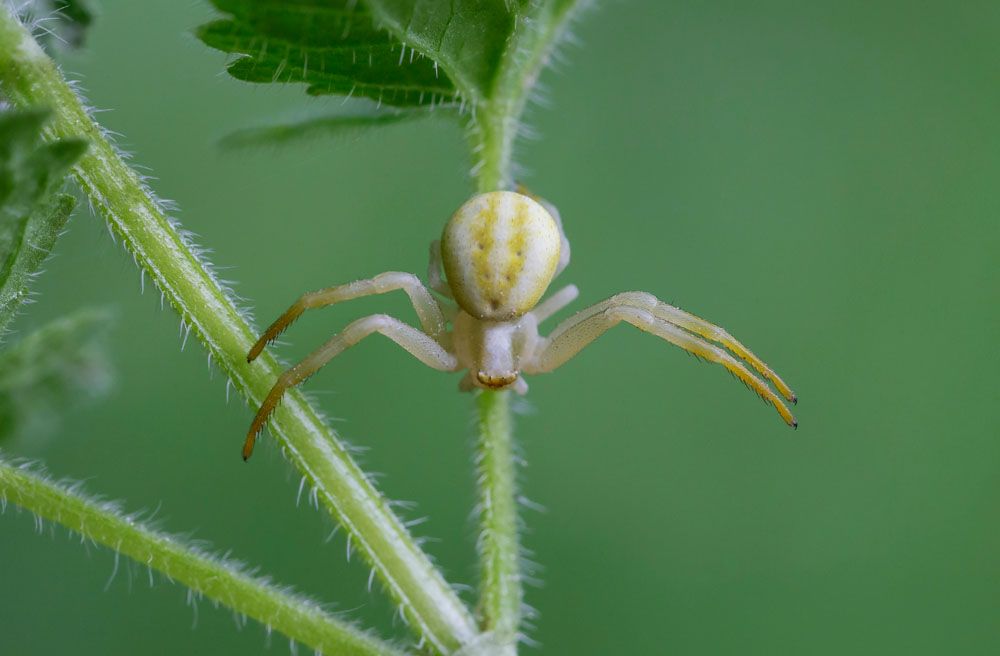
Crab Spiders – Thomisidae
Crab Spiders
Family: Thomisidae
Common Name: Crab spiders, Thomisid crab spiders, Thomisids
Appearance: As the name indicates, crab spiders have got their name due to their crab-like appearance and legs. They are small to medium-sized spiders with a body length of 2-11 mm. They have a relatively flattened body and strong thick legs. Depending on species, they have variable body colors ranging from bright colors (green, yellow, orange, and pink) to dark brown or grey color. They have specific patterns on their abdomens and eight eyes. They have four pairs of legs, with the first two pairs relatively longer than the back two pairs.
Host Plants or Food: Aphids, Thrips, Red spider mites, mosquitoes, flies, moths, Pollens, and nectar.
Territory: United States, Southern Africa
Mode of Damage: Crab spiders are beneficial garden insects as they prey on many plant pests.
Habits and Life History:
Crab spiders are common in gardens, field crops, shrubs, grass, flowers, leaf litter, etc.
They do not spin the wen to capture their predator; instead, they wait for the predator to come within their range and then attack the prey suddenly with their robust front legs. After they capture the prey, they inject venom into their body, paralyze it and then feed.
Adult male crab spider looks for a female crab spider to mate. When he locates a female, mating occurs.
Female crab spiders either find some protected place to lay eggs or build themselves by rolling a leaf with silk.
Like other spiders, crab spiders undergo incomplete metamorphosis. Eggs hatch into immature spiderlings, and spiderlings mature into adults without undergoing the pupal stage.
Female lay eggs in the fall, so they overwinter as either eggs or immature spiderlings.
